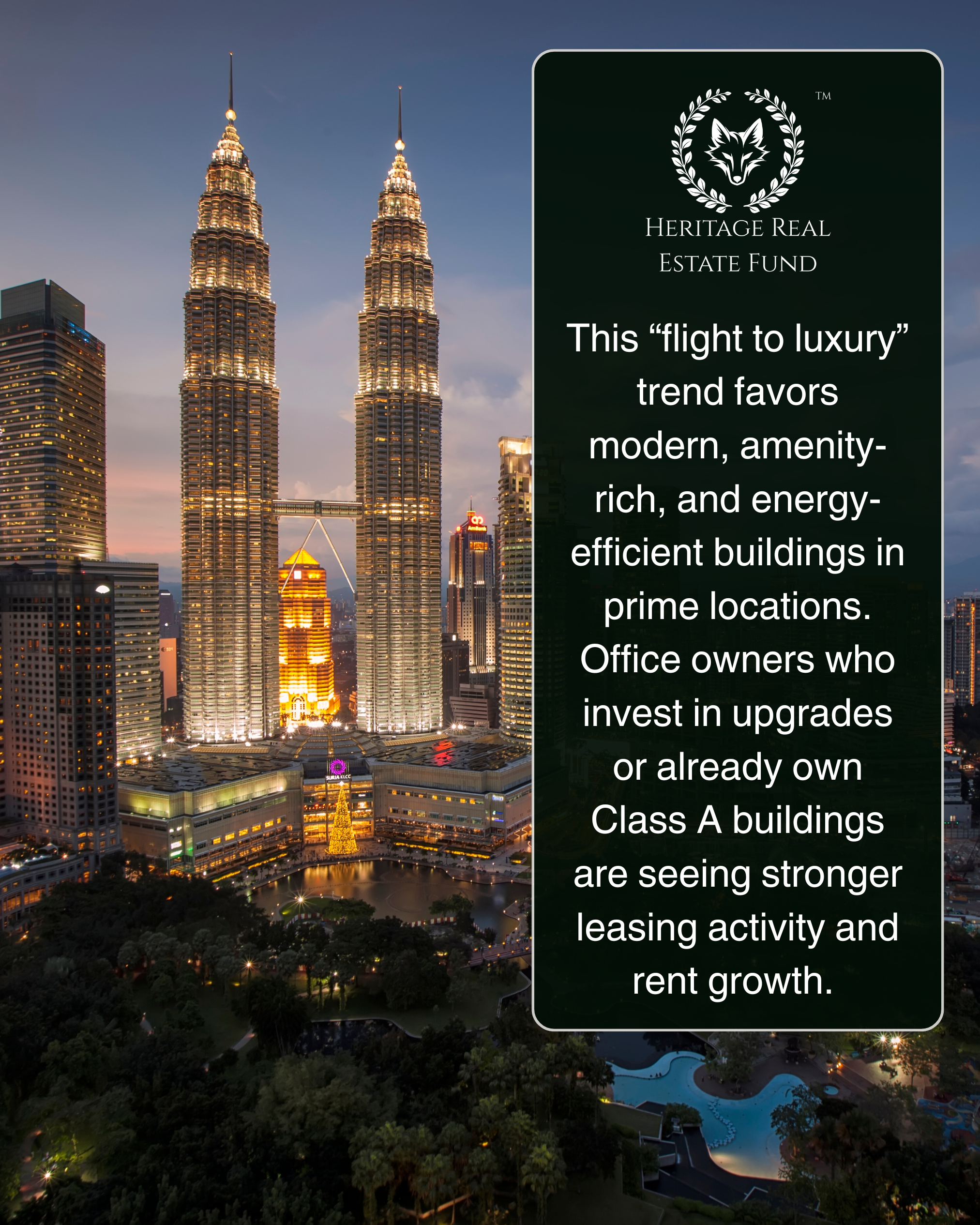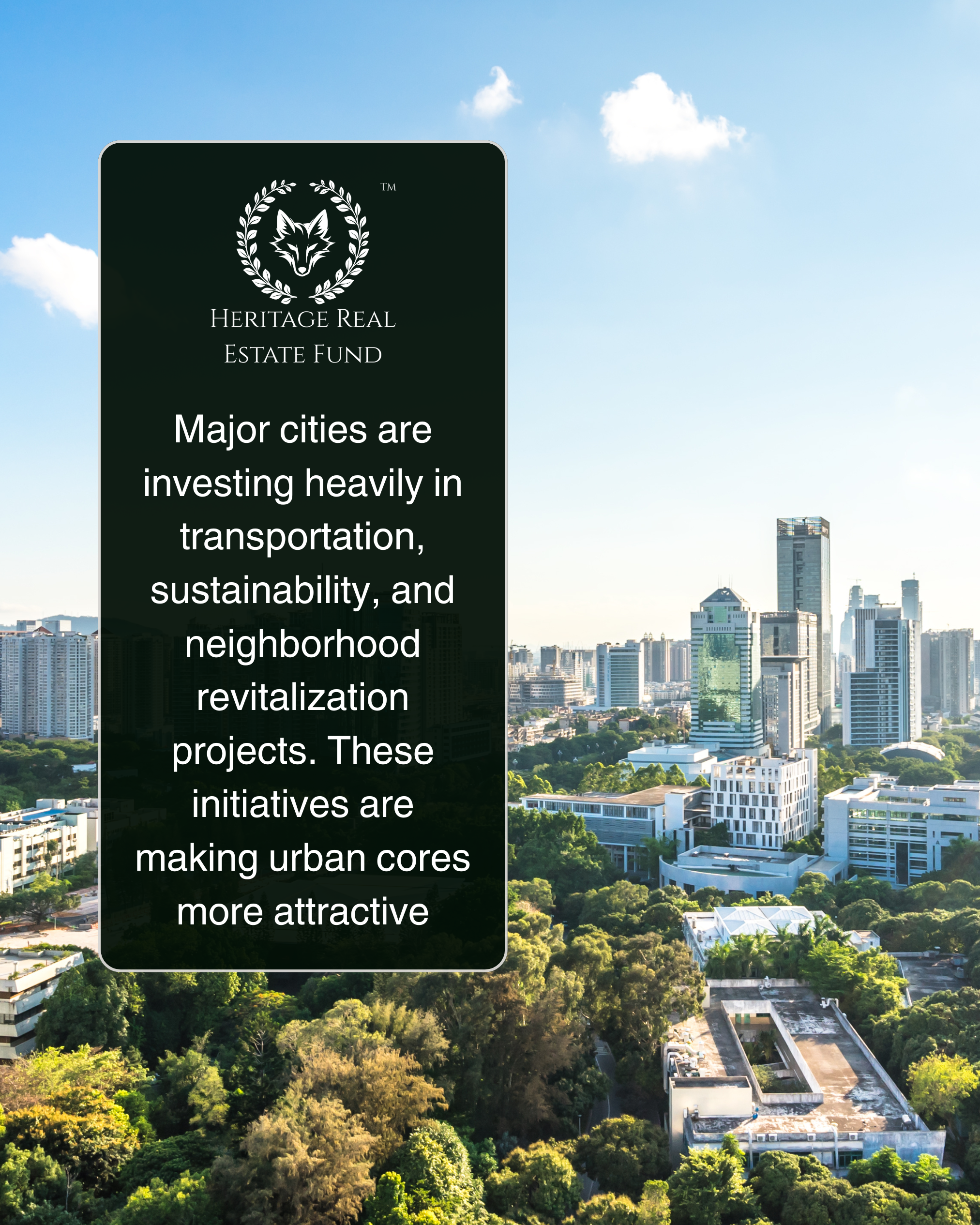
5 Key Reasons Office Buildings Are Poised for Strong Financial Performance in the Coming Years
By Managing Partner Grant Horwitz
After several years of uncertainty in the commercial real estate market, especially in the office sector, the tide has started turning. While remote work reshaped occupancy trends and urban dynamics, many investors and analysts are beginning to see strong signals that office buildings are heading for a resurgence. Below are five key reasons why office buildings are our favorite asset class at HREF. Yes, it is because we believe that they are poised for stronger financial performance in the years ahead.
1. Flight to Quality is Driving Demand for Premium Spaces
As companies reassess their workspace needs, many are opting for less square footage—but significantly higher quality. This “flight to luxury” trend favors modern, amenity-rich, and energy-efficient buildings in prime locations. Office owners who invest in upgrades or already own Class A buildings are seeing stronger leasing activity and rent growth. In short, demand is concentrating at the top, and those well-positioned assets are reaping the financial benefits.
2. Hybrid Work Is Stabilizing Occupancy Patterns
The work-from-home era led to major disruption, but hybrid work is now becoming the norm for many industries. This trend has created more predictable, long-term occupancy patterns, allowing landlords to adjust operating models and reconfigure spaces to suit changing tenant needs. Landlords offering flexible space, shared amenities, and wellness-focused design are attracting steady demand.


3. Urban Revitalization and Infrastructure Investment
Major cities are investing heavily in transportation, sustainability, and neighborhood revitalization projects. These initiatives are making urban cores more attractive to both companies and workers, particularly younger professionals who value in-person collaboration and urban amenities. As cities bounce back, office buildings located near transit hubs and walkable neighborhoods are seeing a resurgence in value.
4. Corporate Recommitment to In-Person Culture
Many large corporations are renewing their commitment to in-person work to foster collaboration, innovation, and company culture. Even with hybrid models, the physical office is regaining importance as a central hub for meetings, onboarding, and client engagement. This shift is translating into longer lease terms and higher occupancy rates, especially in buildings that offer flexible layouts and advanced tech infrastructure.
5. Attractive Entry Points and Repricing Opportunities
The recent dip in office valuations—particularly in lower-tier or underperforming properties—has created opportunities for savvy investors. Distressed assets can be acquired at a discount, repositioned, and modernized for strong returns. With interest rates expected to stabilize or decline and capital waiting on the sidelines, well-located office buildings with potential for repositioning are becoming increasingly attractive.

Final Thought
While not every office building will thrive in the coming years, the market is clearly evolving—and opportunity is emerging for the right assets in the right locations. Investors and landlords who understand the new demands of tenants and align their properties accordingly will be best positioned to capitalize on this next wave of office performance.
Legal Disclaimer: This content is for informational purposes only and does not constitute investment advice, an offer, or a solicitation to invest. Past performance is not indicative of future results. Please consult your financial, legal, or tax advisor to determine whether any investment opportunity is appropriate for your personal circumstances. Heritage Real Estate Fund (HREF) offerings are available to accredited investors and are conducted under SEC Regulation D, Rule 506(c).



